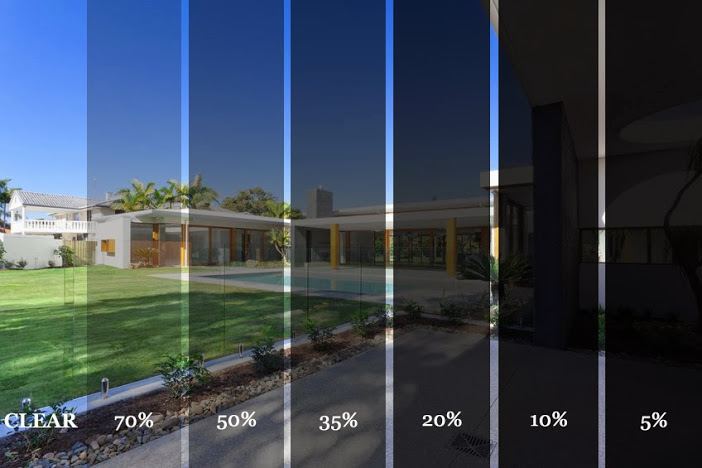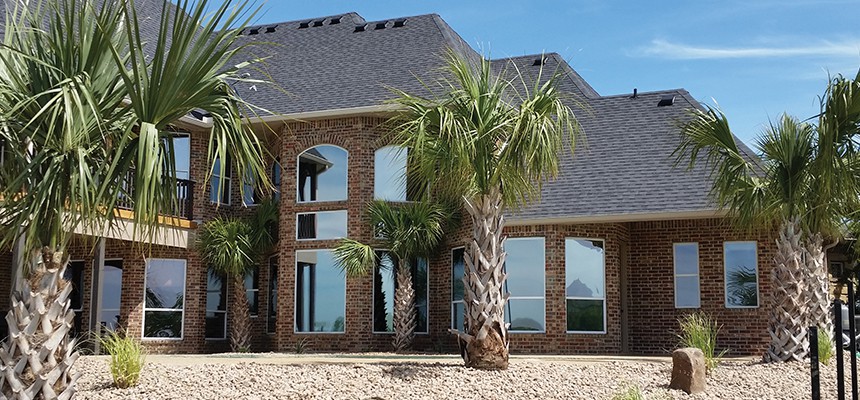Residential Window Tint: Block Harmful Rays Without Sacrificing Natural Light
Residential Window Tint: Block Harmful Rays Without Sacrificing Natural Light
Blog Article
Exactly How Residential Home Window Tinting Enhances Your Home's Energy Effectiveness
Residential window tinting provides a compelling service for property owners looking for to enhance energy effectiveness within their living areas. By applying specialized movies to windows, it properly reduces warm transfer, thus stabilizing interior temperatures and decreasing the requirement for too much home heating or air conditioning. This not only cuts power usage but additionally supplies a more comfy setting by alleviating glow. Recognizing the subtleties of how tinting works and picking the proper type for your home can be critical. Oddly, what aspects should one take into consideration before making this financial investment?
Recognizing Window Tinting
Understanding window tinting is crucial for house owners looking for to enhance both convenience and energy performance in their space. Residential Window Tint. Window tinting involves the application of a thin movie to the interior or outside surface of glass home windows. This movie can significantly regulate the amount of sunlight and heat that gets in a home, thus affecting interior climate problems
There are various types of home window tinting movies readily available, each with unique properties. As an example, dyed films absorb solar power, while reflective films disperse it far from the glass surface. Ceramic movies use an equilibrium of presence and warm rejection, making them a popular selection amongst home owners. The effectiveness of home window tinting is frequently gauged by its Visible Light Transmission (VLT) percentage, which shows how much light can pass via the film.
Advantages of Power Performance
Home window tinting not only enhances looks yet also plays a significant role in improving power efficiency within domestic rooms. By reducing heat transfer via windows, colored films produce an extra steady interior climate, which can result in considerable reductions in power intake for cooling and heating. This energy performance translates right into lower utility expenses, giving home owners with substantial long-lasting savings.

Additionally, window tinting improves the comfort of living spaces. By minimizing glare and obstructing hazardous UV rays, tinted home windows create a more pleasurable atmosphere, which can bring about improved well-being for residents. The defense versus UV rays also assists preserve furniture and flooring from fading, contributing to the long life of house products.
Just How Tinting Works
Tinting movies run through a combination of innovative materials and technologies designed to manage the amount of solar power entering a home. Primarily composed of polyester, these movies frequently include ceramic or metal particles that show and soak up warmth. This dual ability permits them to significantly minimize the penetration of ultraviolet (UV) rays and infrared radiation while permitting visible light to travel through.
The effectiveness of home window tinting is gauged by its solar warm gain coefficient (SHGC), which shows exactly how much solar power is transmitted with the home window. Lower SHGC worths are better as they denote better heat denial. In addition, window tints can include a range of shades, enabling home owners to customize their aesthetic preferences while boosting energy effectiveness.
Additionally, these movies serve as an obstacle, avoiding warm loss during chillier months by mirroring indoor warmth back into the space. This thermal browse this site insulation impact matches the air conditioning benefits gotten throughout warmer months, adding to a well balanced interior climate year-round. By handling solar power successfully, domestic window tinting not only improves convenience yet additionally plays a vital function in reducing power intake and decreasing utility expenses.
Choosing the Right Color

There are different types of home window films readily available, consisting of colored, metalized, and ceramic. Ceramic movies give excellent warm control without jeopardizing presence and are extremely long lasting, making them a preferred option.
Noticeable light transmission (VLT) is one more vital aspect, as it indicates the quantity of natural light that can travel through the colored glass. House owners need to pick a color with a VLT that complements their lights choices while still offering appropriate glow decrease.
Furthermore, assessing the solar warm gain coefficient (SHGC) can aid identify how well a tint can obstruct heat from sunlight. A lower SHGC suggests much better warmth control, eventually enhancing power effectiveness.
Installment and Upkeep Tips
Proper setup and maintenance are crucial elements in link maximizing the benefits of household home window tinting. Specialists also make use of specialized tools and strategies, which can boost the resilience and performance of the color.
Following installation, maintenance is necessary to extend the life of the home window film. It is advised to wait a minimum of 1 month before cleansing the colored home windows to permit the sticky to treat completely. When cleaning, utilize a soft towel and a gentle, ammonia-free cleaner to avoid damaging the movie. Avoid abrasive materials that can scrape the surface.
Additionally, regular inspections are useful. Look for any type of peeling or bubbling, which might suggest incorrect setup or look at this site use with time - Residential Window Tint. Resolving these issues without delay can avoid more damages and maintain power efficiency. By sticking to these installment and maintenance suggestions, property owners can ensure their window tinting proceeds to supply considerable power cost savings and comfort for years to come.
Conclusion
To conclude, domestic window tinting works as a reliable option for improving power effectiveness within homes. By decreasing warmth transfer and blocking harmful UV rays, home window films add to decrease energy usage and improved indoor convenience. The choice of ideal tinting products, together with proper installation and maintenance, better takes full advantage of these benefits. Ultimately, home window tinting represents a lasting financial investment that not only lowers utility expenses however additionally promotes a comfortable living setting throughout the year.
Window tinting involves the application of a slim movie to the inside or outside surface of glass windows. By lowering heat transfer with home windows, colored films produce a more steady interior environment, which can lead to substantial reductions in energy intake for heating and cooling.The efficiency of home window tinting is measured by its solar warm gain coefficient (SHGC), which suggests how much solar energy is sent via the window. By managing solar energy successfully, household home window tinting not only boosts convenience yet additionally plays an essential function in minimizing energy consumption and lowering utility expenses.
By lowering warmth transfer and obstructing dangerous UV rays, window films add to lower power intake and improved indoor comfort.
Report this page